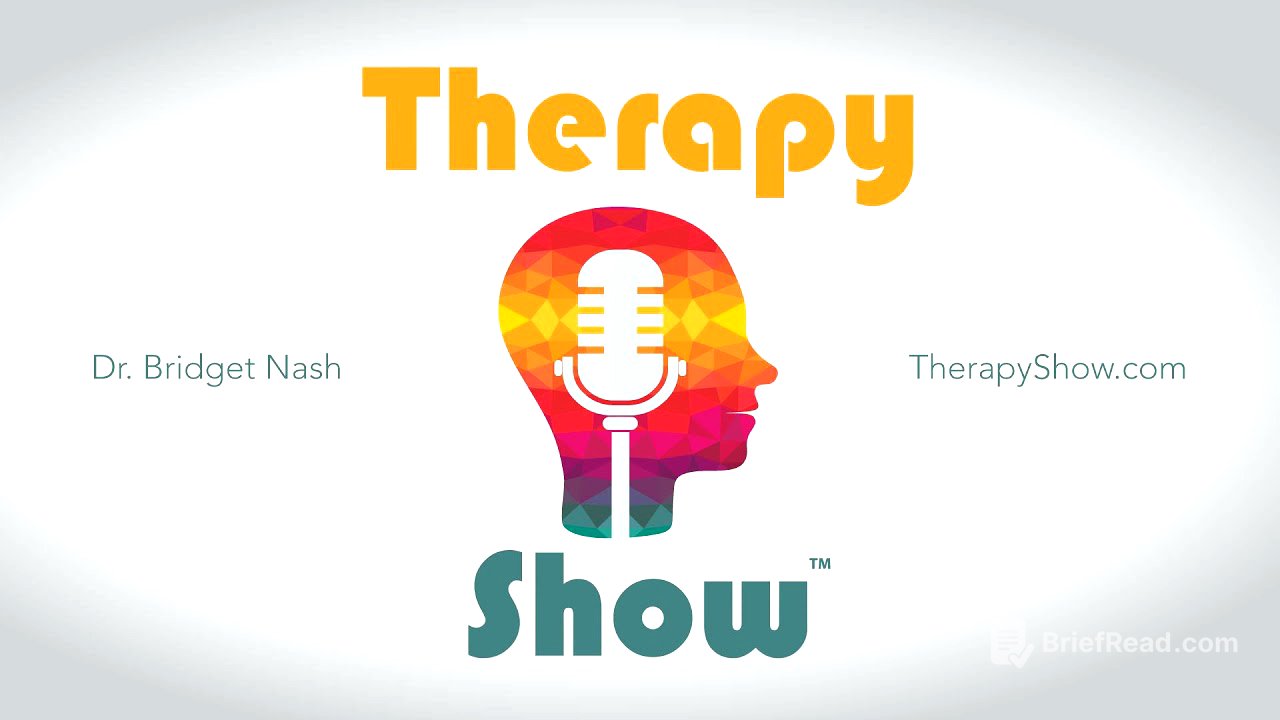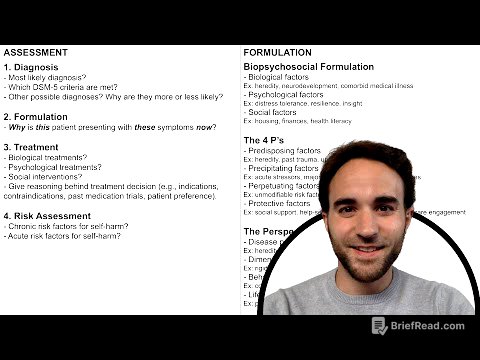TLDR;
Dr. Nicole Stadnik discusses autism spectrum disorder (ASD), integrated care models, and community engagement in mental health treatment. She highlights the importance of early identification of co-occurring mental health needs in individuals with autism and the need for specialized training for healthcare providers and school staff. She also emphasizes the significance of community engagement in developing and implementing effective interventions.
- Autism is a neurodevelopmental condition with varied presentations.
- Integrated care models are essential for addressing the complex healthcare needs of individuals with autism.
- Community engagement is crucial for developing effective and sustainable interventions.
Introduction [0:00]
Dr. Bridget Nash introduces Dr. Nicole Stadnik, a psychologist and assistant professor, whose research focuses on promoting equitable access to evidence-based mental health services for children with autism spectrum disorder (ASD) and co-occurring mental health needs. Dr. Stadnik leads implementation projects focused on community-engaged health services and research for individuals with complex clinical presentations.
Dr. Stadnik's Background and Professional Development [1:07]
Dr. Stadnik shares her journey into autism research, which began in college as a respite provider and research assistant. She observed a gap between research-backed interventions and real-world practice, which motivated her to pursue doctoral studies in clinical psychology and a master's in public health. Her work now centers on implementation science, community engagement, and health equity, with a focus on improving care for autism and children's mental health services.
Explanation of Autism Spectrum Disorder (ASD) [2:54]
Autism is a neurodevelopmental condition rooted in brain development and genetics, manifesting differently among individuals and evolving as they age. The current diagnostic manual, DSM-5, combines previous separate diagnoses into the single term "autism spectrum disorder." Hallmark features include difficulties with social communication and restricted, repetitive patterns of behavior, impacting school, work, play, and daily activities. Individuals with autism may also experience heightened sensory sensitivities and co-occurring medical or mental health concerns.
Importance of Integrated Care Model [5:58]
Integrated care involves healthcare teams collaboratively working with families to make decisions and connect to needed care. Individuals with autism often have multiple healthcare needs, including physical and mental health concerns, making care coordination complex and stressful. Integrated care models, particularly those anchored in pediatric primary care, can facilitate early identification of mental health needs and linkage to appropriate services. Studies show that over 90% of individuals with autism have co-occurring mental health needs, which are often identified late, sometimes only at a crisis point in school settings.
Medication for Autism Spectrum Disorder [8:15]
There is no autism-specific medication. Medications are typically prescribed to address co-occurring mental health needs such as aggressive behaviors, attention problems, or emotional dysregulation resulting from anxiety or depression. Addressing these related symptoms can help children learn and participate in the community.
The "ATTAIN" Integrative Care Model [10:00]
The "ATTAIN" model (Access to Tailored Autism Integrated Care) is an eight-step roadmap for pediatric primary care settings to identify co-occurring mental health needs and link to mental health services. It uses the Pediatric Symptom Checklist-17 (PSC-17) as a screening tool. The project is funded by the National Institute of Mental Health and involves partnerships with multiple healthcare systems in the San Diego region, including a federally qualified health system, to understand how families from diverse backgrounds access healthcare. The model was co-created with a community and scientific advisory board, including mental health providers, pediatricians, parents, and researchers, and tailored to fit individual healthcare systems' workflows and priorities.
Addressing Unmet Mental Health Needs [13:46]
Children with autism spectrum disorder often have high unmet mental health needs due to the complexity of identifying these issues, which are often under-identified and subject to diagnostic overshadowing. This means co-morbid mental health problems are overlooked because of the more pronounced autism symptoms. To address this, the ATTAIN model aims to increase awareness among primary care providers, emphasizing that autism often presents with co-occurring mental and physical health needs.
Specialized Training for Clinicians [16:10]
Ideally, both mental health clinicians and primary care providers should have specialized training in autism spectrum disorder treatment. Foundational knowledge about autism, co-occurring mental health presentations, and basic intervention strategies would be helpful. The "AIM High" intervention was developed for community mental health clinicians to provide specialized skills in identifying mental health needs and adapting therapies for individuals with autism. Training should be brief and fit within the context of care provision, responsive to stakeholder needs.
Importance of School System Education [18:47]
Schools and school systems should receive education on autism spectrum disorder, as changes in academic demands or school environments can make symptoms more apparent. Teachers, administrators, and school psychologists can benefit from additional training to recognize co-occurring mental health issues and make appropriate referrals. School concerns are a common pathway to accessing outpatient mental health services for children with autism.
Importance of Community Engagement [20:54]
Community engagement is essential for better interventions, implementation, and long-term sustainability. It reduces the gap between intervention development and real-world access. Community members, including parents, patients, and providers, should be involved early in the process. Methods include co-creation with advisory boards, tailoring implementation plans, developing a theory of change, and assessing community engagement through surveys and observations.
Barriers to Community Implementation [23:05]
Effective treatments often remain confined to university research settings. A key barrier is the gap between intervention development and real-world access for providers and patients. Engaging real-world implementers earlier in the intervention development process ensures that effective treatments are used by providers and reach patients in need. Clinicians are more likely to adopt interventions in which they have an investment and have provided input.
Disparities Faced by Underserved Communities [25:37]
There are disparities in age of diagnosis and access to care for individuals with autism from underserved communities. Efforts are needed to ensure equitable access to diagnostic and treatment services. Policy changes at the national level aim to encourage universal autism screening to identify individuals from all racial and ethnic backgrounds earlier.
Excitement About Mental Health Treatment Today [26:46]
There are increasing national and international efforts to promote health equity in mental health treatment research and practice. Healthcare systems, research funders, and policymakers are increasingly supportive of investing in research and practice efforts that promote access to evidence-based practices for those with mental health needs.
Improving Mental Health Treatment [27:45]
Two key areas for improvement are equity and expanded workforce capacity. Equity includes access to services in multiple languages, stigma reduction, and widely available information. Expanded capacity involves diversifying the mental health provider workforce, investing in community health workers and family navigators, and spreading out training to provide care to individuals with mental health needs and autism. Addressing long wait times for treatment is crucial, as delays can significantly impact a person's course of illness. Early diagnosis and intervention for autism are also essential to maximize positive outcomes.
Conclusion [29:47]
Dr. Nash thanks Dr. Stadnik for her contributions to mental health treatment and for sharing her expertise on autism spectrum disorder. Listeners are encouraged to visit therapyshow.com for resources on mental health and to subscribe, share, and review the podcast.









